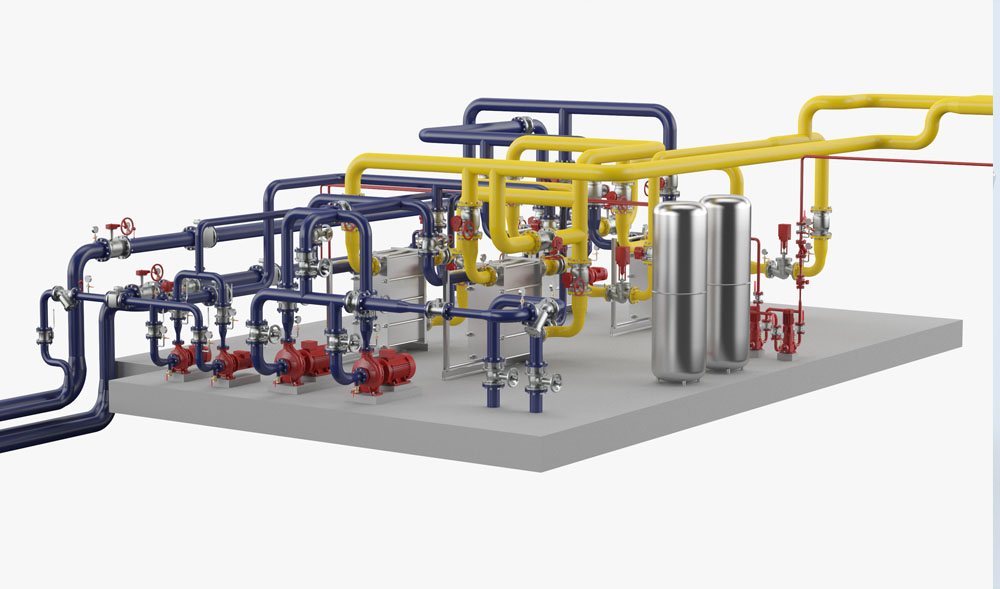Hydraulic Tube Specifications: Understanding the Basic Requirements
-
2022-11-10
-

Hydraulic tubing is a flexible material that has many applications in industrial processes. It is used in numerous machines and tools, including those that require a pressurized flow of oil or gas. . Hydraulic tubing provides the pressure and flow needed for these functions. It is also compact and easy to install. This makes it an accessible option for most manufacturers and users of industrial equipment. In this blog post, we will discuss the basic requirements for hydraulic tubing. The design, performance, and features of any product are directly influenced by its specifications. The same goes for hydraulic tube products. To choose the right one, you need to understand their various characteristics and how they impact performance down the line.

Understanding the Basics of Hydraulic Tubes Specifications
A hydraulic tube is a cylinder with a closed end. This closed end is where the fluid flows through. The tube is made from a high-strength steel alloy. The inner diameter and wall thickness of hydraulic tubes are the two main specifications that define a hydraulic tube. The inner diameter refers to the diameter of the tube. It is the measurement of the distance across the tube, inside the wall. The wall thickness refers to the distance between the inside and outside of the tube. The wall thickness determines a tube’s strength, as well as its weight. The wall thickness is measured as the distance between the outside of the tube and the inside of the wall. Another important specification of a hydraulic tube is its length. Hydraulic tubes are made in standard lengths, which makes them easily available. The most common length is 9 feet.
Determining Tube Size
In order to select the right tube size, you need to decide on the flow rate and pressure. You can also use a tubing chart to help you find the right size for your application. The flow rate refers to the amount of fluid that passes through the tube in a given amount of time. It is measured in gallons per minute (GPM), cubic feet per minute (CFM), or pounds per minute (PSI). The pressure refers to the amount of force that is exerted by the fluid inside the tube. It is measured in pounds per square inch (PSI). The appropriate selection of hydraulic tubing is important for maintaining pressure and flow rates. It will also prevent tube failure.
Keep in Mind When Selecting Your Tube
You may be wondering how the features of a hydraulic tube matter. Why is it important to select a tube with a certain feature? The features of a hydraulic tube will determine its versatility and compatibility. These features also influence operational costs, installation time, and maintenance requirements. Most manufacturers will provide you with a complete specification sheet for their products. This sheet will have a detailed list of the features of their products. It will also provide information about why these features are important. You can also read online reviews about different hydraulic tube products to find out more about their features. You can also use the internet to find charts that compare the features of various hydraulic tube products. This will help you make the best selection for your application.
Important Features for Hydraulic Tubes
Pressure Rating – Hydraulic tube pressure ratings vary depending on the material and design. You should look for a rating at least 5 psi above your required maximum pressure. This will ensure the tube will be able to handle any additional pressure if it comes up. Working Temperature – The hydraulic tube working temperature refers to the maximum temperature it can withstand. You will find this information in the tube’s spec sheet. It will also be indicated on the tube’s packaging. Most hydraulic tubes have a maximum working temperature of about 200 degrees F. Fluid Compatibility – Hydraulic tubes are designed for specific operating conditions. The fluid it must be used with and in. You should select a hydraulic tube that can withstand the same conditions in your operation. This will prevent tube damage and premature failure.
SAE and Dimensional Standards for Hydraulic Tubes
SAE is the abbreviation for the Society of Automotive Engineers. This group creates standards and specifications for various industrial products. Hydraulic tube manufacturers use SAE standards to ensure that their products are compatible with other industry products. You can find SAE standards for hydraulic tubes on the SAE website. You can also find them on manufacturer’s websites. This information will let you know if your tube is compatible with other products in your operation.
Summing up
Hydraulic tubing is a flexible material that has many applications in industrial processes. It is used in numerous machines and tools, including those that require a pressurized flow of oil or gas. Hydraulic tubing provides the pressure and flow needed for these functions. It is also compact and easy to install. This makes it an accessible option for most manufacturers and users of industrial equipment. In order to choose the right hydraulic tube, you need to understand their basic specifications. These include the inner diameter and wall thickness, as well as the flow rate and pressure. You can also use a tubing chart to help you find the right size for your application. The features of a hydraulic tube matter. Why is it important to select a tube with a certain feature? The better you understand what each feature does, the easier it will be to select the right hydraulic tubes for your operation.



